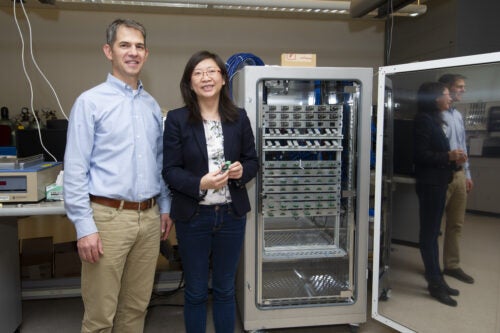
The growth of renewable energy sources, such as solar and wind that produce energy independent of demand, has hastened the search for a large-scale, low-cost energy storage solution for grid applications. In support of overcoming the scientific challenges needed to deliver the next energy storage solution, Claire Xiong is developing new materials for sodium ion batteries, which are a cost-effective and safe alternative to lithium ion batteries.
With a recent three-year, $750,000 award from the Department of Energy EPSCoR program, Xiong and co-Principal Investigator Elton Graugnard, both from the Micron School of Materials Science and Engineering, are collaborating with researchers from Argonne National Laboratory to develop cathode materials that improve the capacity and lifetime of sodium ion batteries.
Their research, titled “Understanding Interfacial Chemistry and Cation Order-Disorder in Mixed-Phased Complex,” is designed to optimize interfaces and defects in mixed-phased complex sodium transition metal oxide cathodes.
“A major design consideration in improving the performance of sodium ion batteries is the choice of cathode material,” said Xiong. “We are intentionally designing imperfections into these materials to impede structural degradation during charge/discharge cycles.”
It is these cycles, and the corresponding change in structure over time, that limit the lifetime of batteries.
“Through this DOE EPSCoR partnership, we have the expertise and resources to systematically investigate the influence of defects in complex sodium transition metal oxides on battery performance,” said Xiong. “We anticipate that the knowledge obtained through this research will provide the insight needed to tune the properties of these materials for improved structural stability, leading to an unprecedented advancement in battery science for electric grid applications.”